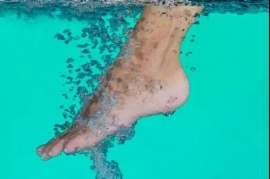
伤口世界
- 星期五, 06 9月 2019
【分享】国际共识文件--对伤口渗出物的有效评价及处理
渗出物管理是伤口愈合过程管控中非常重要的一个环节,它可能贯穿整个伤口治疗的过程。国际伤口愈合联合会(WUWHS, World Union of Wound Healing Societies)在2007年曾经发布过一份关于渗出物管理的共识文件,时隔十二年,因为各种新的临床护理技术及方法的出现,WUWHS认识到临床需要更多、更新的指导意见,因此组织专家组对旧版本的共识文件进行了更新,并于2019年年初发布了新版文件。华阳医疗临床小组对此份文件进行了编译,因篇幅较长,所以内容将分几期进行转发推送,供各位老师参考,并对其中不足之处做出指正,感谢。

- 星期五, 06 9月 2019
不良情绪对疤痕的影响
疤痕确实给广大疤友带来了无穷的痛苦,但是看到许多疤痕并不重的,甚至都算不上疤痕的人,大喊压力如何大,如何影响疤痕修复,去疤痕的方法不管用什么的。请你不要大喊,这不叫压力。相比人家脸部的疤痕,相比大面积的疤痕这根本不算什么,相对而言,别人那些大面积疤痕修复更加困难。

- 星期五, 06 9月 2019
糖尿病人泡脚有风险
中诺医疗
文章转自公众号 兰世亭 作者 Dr.Panda
近几天气温陡降,老朱在家泡了一次脚,就十分钟左右。然而,他的脚还是烫伤了,伤口引发高烧、感染,甚至导致休克、昏迷。所幸经过及时抢救,老朱的命救回来了,但双脚却逃不掉截肢的厄运。


